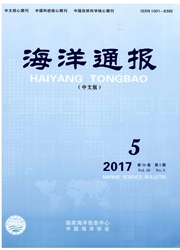

 中文摘要:
中文摘要:
海水中日益增多的悬浮物和泥沙沉降是导致珊瑚礁严重衰退的原甲之一。沉积物覆盖在珊瑚礁生物表面,影响其呼吸作用,而海水浊度的增加会减少光合作用的可利用光。过多的沉积物改变了礁区的物理以及生物过程,从而对珊瑚礁生态系的结构和功能产生不利影响。为了有效评估珊瑚礁的变化趋势,如优势种丰度以及空间分布的变化等,应用标准的监测方法进行长期监测对于掌握这一复杂生态系统的变化是非常关键的。综述了沉积物对珊瑚生长率、生长形态、代谢和繁殖与补充以及礁区生物的影响.并指出未来的研究方向,以期为珊瑚礁的保护提供参考。
 英文摘要:
英文摘要:
Unprecedented development along tropical shorelines is causing severe degradation of coral reefs primarily from increase in sedimentation from dredging and terrestrial runoff. Sediment particles smother reef organisms and reduce light available for photosynthesis. Excessive sedimentation can adversely affect the structure and function of the coral reef ecosystem by altering both physical and biological process, Heavy sedimentation is associated with fewer coral species, less live coral, lower coral growth rates, greater abundance of branching forms, reduced coral recruitment decreased calcification, decreased net productivity of corals, and slower reef accretion rates. Coral species have different capabilities of clearing of themselves of sediment particles or surviving lower light levels. Sediment rejection is a function of morphology, orientation, growth habit, and behavior; and of the amount and type of sediment. To effectively assess trends on coral reefs, e,g. changes in abundance and spatial arrangement of dominant benthic organisms, scientists must start using standardized monitoring methods. Long-term data sets are critical for tracking these complex ecosystems. This paper reviewed the effects of sedimentation from dredging and terrestrial runoff to coral reefs and reef organisms, and pointed out the future research needs in order to provide reference for coral reef conservation.
 同期刊论文项目
同期刊论文项目
 同项目期刊论文
同项目期刊论文
 期刊信息
期刊信息
